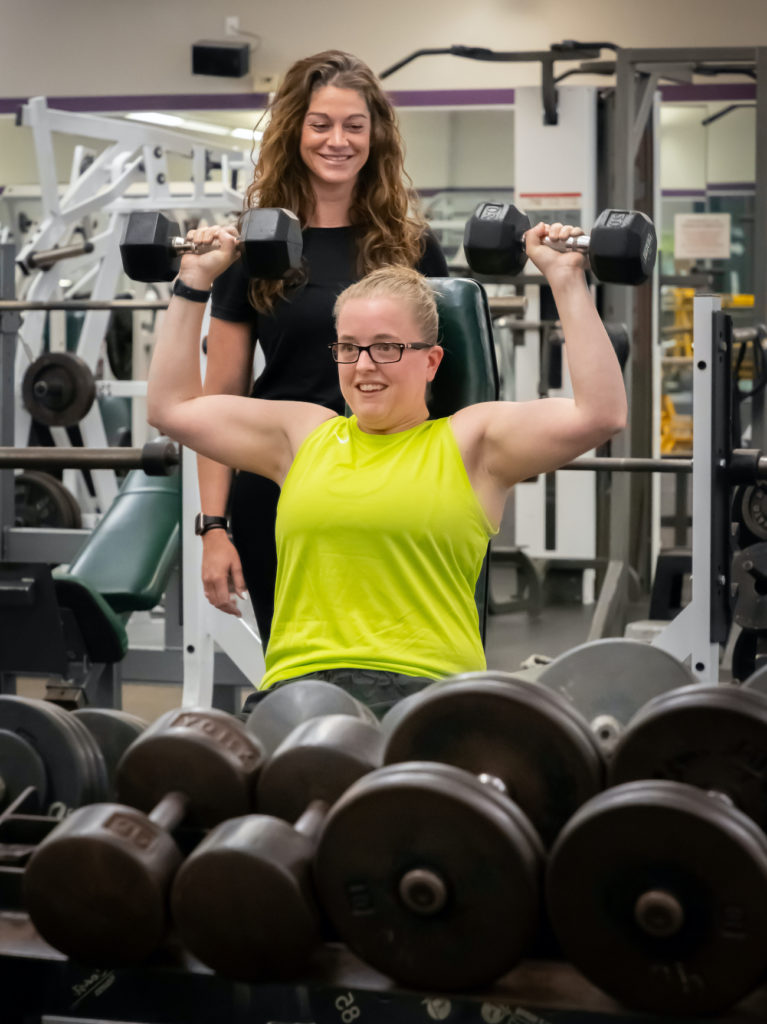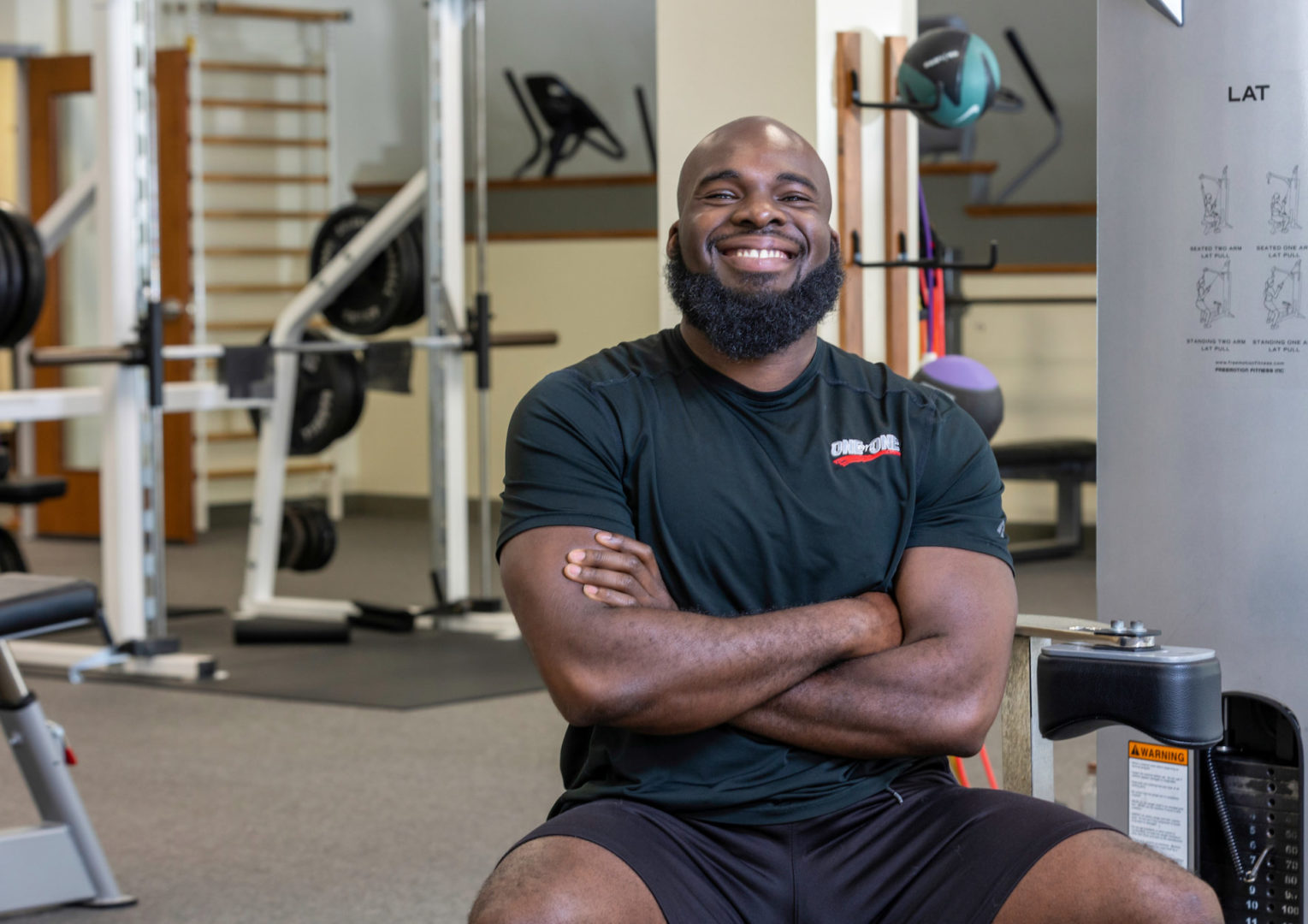Once thought of as a luxury reserved for the rich and famous, personal training has exploded in popularity over the past decade or so. Today, more and more people are turning to personal training as an accessible and effective way to get in shape and stay healthy—largely because it’s hard for most people to come up with a fitness routine on their own that provides the safety, education, and accountability that a personal trainer can deliver.
A more customized approach to fitness makes personal training a great choice for those just starting their own fitness journey, according to Gbolahan Olaogun of One on One Fitness Consultants.
“Movement is a human need. We’ve been told since grade school we should be doing at least three days of moderate-to-high intensity exercise per week, but who knows what to do with that consistently and for a long period of time? I think a lot of people are inactive because they just don’t know what to do,” he says. “That’s where we come in.”
Caitlin Bly Leiter of MBI Fitness says, “Someone who is just starting out can be pretty intimidated by going to a gym and not knowing how to use all of the different equipment. So one-on-one training is great for a beginner. I like to dip into everything with a client, so they get a feel for the gym.”

Safety First
Besides being a good introduction for beginners, a big advantage of personal training is that it is the safest way to work out and avoid injury, both Leiter and Olaogun believe. To that end, One on One and MBI Fitness both start their clients off with a personal consultation.
“I’ll get their orthopedic history, their medical history, we’ll do a formal movement screening, we’ll just gather as much information from them as possible. …And then, once we understand what their capabilities are, we can build a program that’s going to be able to help them accomplish their goals without compromising their body,” Olaogun says.
Once the client starts working out in the gym, one of the personal trainer’s roles is to make sure they are doing things correctly.
“You’re getting that attention, especially when it comes to form, which is very important so you don’t hurt yourself,” Leiter explains. As an example, Olaogun says, “Deadlifts are a huge part of our training. They’re important. They’re not bad inherently, but doing them wrong can be. That’s why you come to a personal trainer—to trust that you’re doing things right.”
For safety’s sake, Leiter cautions against comparing yourself to others, especially on social media. “You might see people performing these really big lifts and think you should be able to do that. But your page one is someone else’s chapter 50. So if you are on page one, get your form right before you even add any weight.”
‘Teaching clients to fish’
Leiter has been with MBI Fitness since March, having worked as a group fitness coach at Orange Theory for three years prior to that. She says her client base is made up of a wide age range, but for the most part, “It’s your professional crowd, people who may be kind of sedentary in their work life, sitting behind a computer, who just want to move. … Most are just everyday people looking for an extra boost to their fitness journey.”
Olaogun has been with One on One since 2015 and says that, while his client base ranges from teenagers to octogenarians, the majority of them are in the 55–65-year-old age group.
He says that often the initial motivating factor that leads people to One on One is “cosmetic”—a desire to lose a few pounds. He views his role as finding a way to inspire them to want to move beyond that initial weight-loss goal.
“When you come in, you might have great motivation to lose five or ten pounds. But then when you do lose those pounds, do you just stop? No,” he says. “We need to get them to recognize that someday you will be 75, you will be 85, and you want to have the energy and the strength to be able to pick up your grandbabies, or go for a nice walk, or hike a mountain, or whatever you want to do. Getting them in the door is kind of the easy part. Getting them to realize what they are here for ultimately–to live a healthy, happy lifestyle–that’s kind of the art of it.”
That art involves educating clients about the big picture, he says. “Anybody can give anybody a workout. You can go on Google and get a good workout. I think there are a lot of people out there who are just focused on the workout, not taking care of the human,” he says. “We try to teach our clients how to fish. We don’t just tell them what to do.
We want them to have some education so they know the ‘whys’ and the ‘hows.’And we try to make it so it’s not just about the workout, but it’s like, ‘If we take care of you for 55 minutes, what are you doing for the rest of the 23 hours in your day?’” The big picture includes some education about nutrition.
Although neither Olaogun nor Leiter are qualified to offer detailed nutritional advice to clients as personal trainers, both One on One and MBI have a registered dietician on their staff who can. Because every client has different needs, both Olaogun and Leiter say there is no such thing as a “typical” workout, but they do say there is a general format they strive for when developing a program for a client.
“I like to do a full-body day two or three times a week. We’ll start off with some kind of squat or dead lift or some kind of hinge movement, working into some upper body—chest and back—then move into more lower body, maybe a lunge. Then back into your biceps and triceps, and then ending with some kind of core exercise. So, well-rounded and balanced,” says Leiter.
Olaogun says after some movement prep and raising the heart rate, “Everybody is going to do some resistance training. Everybody is going to pull, push, do some lower body work. They’re going to hinge, they’re going to squat, they’re going to lunge. This isn’t rocket science; we aren’t trying to reinvent the wheel. We know what works.”
Susan Hartman is a One on One client who says she appreciates the big-picture approach. Hartman, 58, began working out with Olaogun at One on One in 2017 after ankle surgery left her feeling weak and out of shape.
“I credit them with really starting at a place of corrective exercise and then helping me to slowly work up to a new plan,” she says. “What I can do today versus what I could do five years ago always shocks me. …After the first year, I couldn’t believe that I had stuck with it, and I sent them flowers that said, ‘You are my longest personal fitness relationship.’ It feels like that to me; it feels very much like they are as committed to my health as I am. I love that their mission is not all about just losing weight. … It’s really just this idea of, what is it going to take in your life to be happy and healthy for the long haul.”
Variety of Options
Choosing personal training does not mean you are stuck just working out one-on-one with a trainer all the time. MBI Fitness and One on One both offer a variety of packages that include independent programs.
MBI Fitness is located at East Coast Health and Fitness, and all personal training clients receive a complimentary membership to that facility, as well as a mobile training app that they can use to work out on their own. They also offer “dual training,” an opportunity to train with a partner as a way to cut down on cost.
One on One also offers small group training classes as a more affordable option, after an initial four or five weeks of individual training. Small groups are made up of two to five clients, so they still receive individualized attention, Olaogun explains.
“The majority of our clients go into small groups after they start,” he says, with several options available, ranging from small group sessions only to a small group personal fitness plan, which includes unlimited access to the facility, allowing clients to follow an independent fitness plan on their own to complement their small group work. Both gyms also offer virtual training as an option for clients.
Experience Matters
When looking into personal trainers, Olaogun says consumers should try to get information about a trainer’s background. “The barrier for entry is so low; there is a lot of watered-down training out there,” he says.
Olaogun majored in movement science at Penn State and has been trained and certified through One on One’s own in-house training program.
Leiter majored in English and professional writing in college, but, she says, “I was an athlete in high school and I have always been into fitness.” She obtained her personal training certification through the Academy Council on Exercise for her previous job at Orange Theory and gets re-certified every two years. T&G
Karen Walker is a freelance writer in State College.




